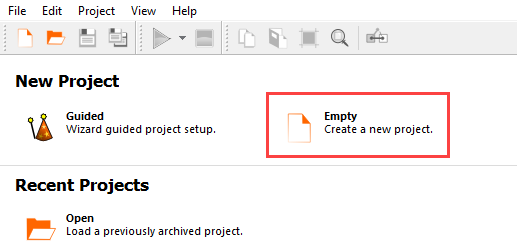This tutorial allows you to complete a calibration of a single degree-of-freedom system excited with initial kinetic energy.
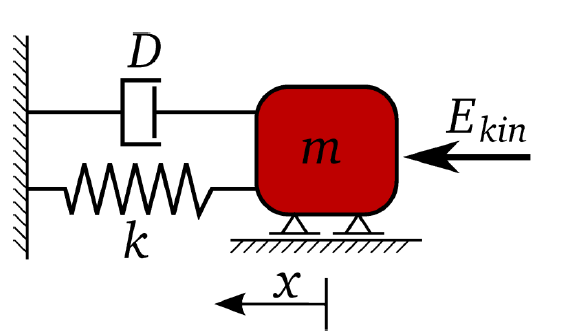
The equation of motion of free vibration is:
The un-damped and damped eigen-frequency is
The time-dependent displacement function is:
The goal is the identification of the input parameters m, k, D, and Ekin to optimally fit a reference displacement function.

The objective function is the sum of squared errors between the reference and the calculated displacement function values
This tutorial demonstrates how to do the following:
Generate a solver chain using Excel
Define the input parameters
Define the output and reference signals
Before you start the tutorial, download the oscillator_signals_excel zip file from here , and extract it to your working directory.
To set up and run the tutorial, perform the following steps:
- Creating a New Project
- Starting the Solver Wizard
- Selecting the Input File
- Selecting the Input Parameters
- Selecting the Responses
- Defining the Output Signal
- Using Macros
- Editing the Parameter Properties
- Completing the Solver Wizard
- Saving the Project
- Defining the Reference Signal
- Routing the Reference Signal
- Defining the Signal Functions
- Creating the Solver Chain Template
From the Wizards pane, drag the Solver wizard to the Scenery pane and let it drop.
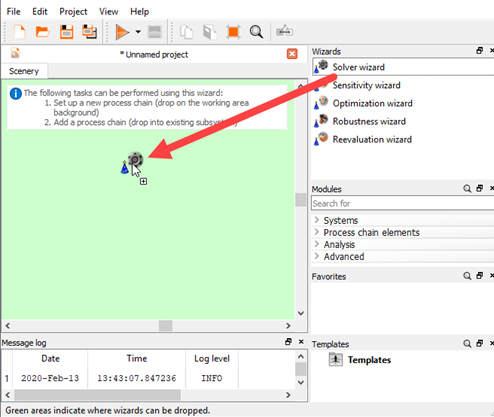
From the solver list, click .
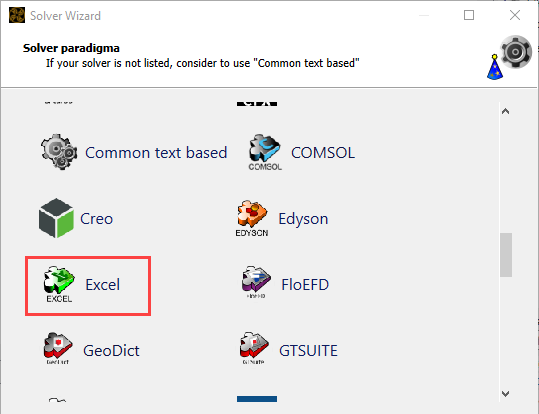
Note: Ensure all Excel applications are closed before completing this step.
In the Select input file dialog box, browse to the oscillator_signals_excel folder and select oscillator.xls.
Click .
In the main pane, select rows 1, 3, 4, and 5 (D, Ekin, k, and m).
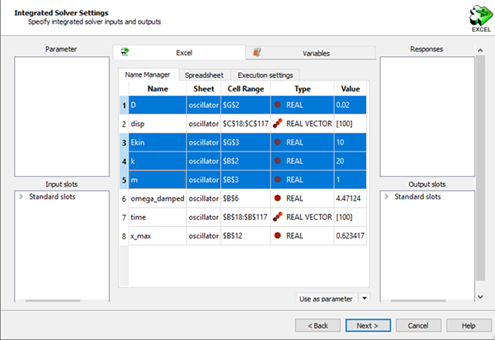
Drag them into the Parameter pane to register them.
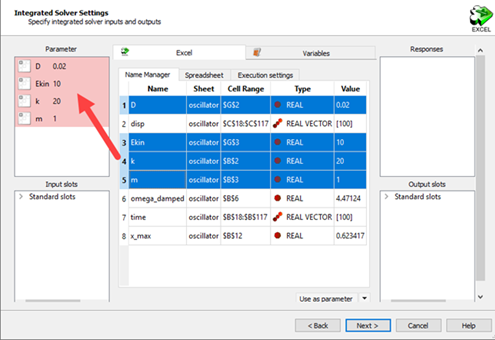
In the main pane, select rows 2 and 7 (disp and time).
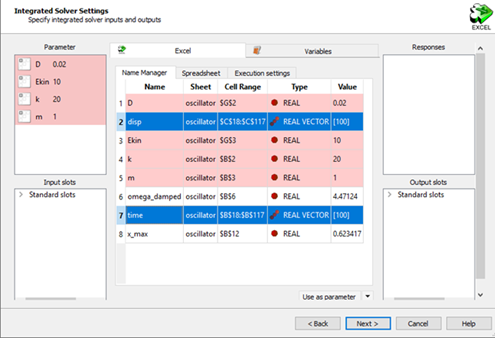
Right-click the selection and select from the context menu.

Switch to the Variables tab
Click .
Double-click the ID cell for the new variable, type
Simulation, and press Enter.Right-click the Expression cell of row 3 (Simulation) and select from the context menu.
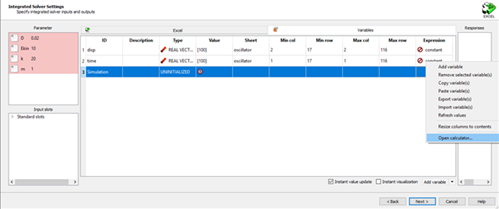
In the calculator, switch to the Signal tab.
Click .
In the brackets, type
time,disp.
Click .
Drag the Simulation row into the Responses pane to register it as a response.
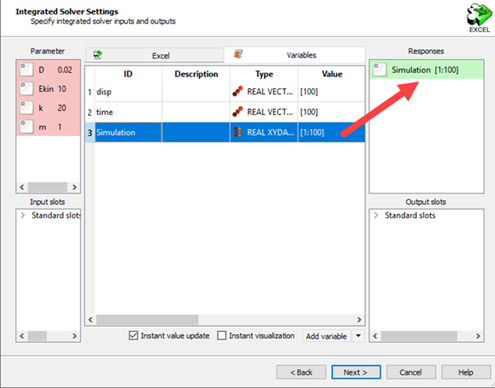
Optionally, select the Instant visualization check box to see if the signal is correct.

Switch to the Excel tab.
Switch to the Execution settings.
Select the Modul1.WriteOutput check box.
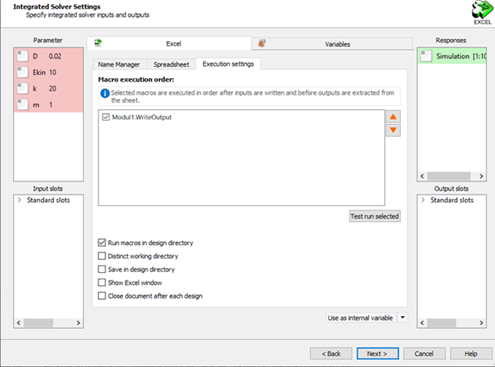
Note: In some version of Excel, you must activate macros in the Trust Center settings before they can be used. For more details, refer to the documentation provided with your version of Excel.
Click .
Double-click the range numbers for row 1 (D).
Change the lower bound to
0.01and the upper bound to0.05.Double-click the range numbers for row 2 (Ekin).
Change the lower bound to
10and the upper bound to100.Double-click the range numbers for row 3 (k).
Change the lower bound to
10and the upper bound to50.Double-click the range numbers for row 4 (m).
Change the lower bound to
0.1and the upper bound to5.
Click .
Do not adjust or add to the currently displayed values for parameters, responses, and criteria.
Click .
Leave the Create a template from solver chain check box clear. You will create a solver chain template in a later step.
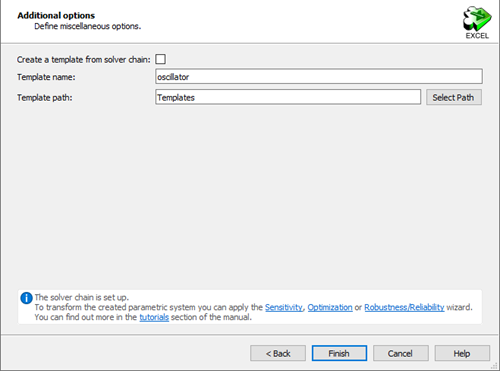
Click .
The solver chain is displayed in the Scenery pane.
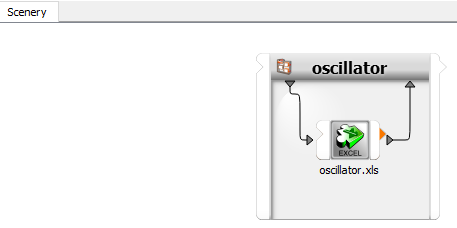
To save the project, click
 .
.Browse to the location to save the project and type a project name in the File name field.
Click .
In the Modules pane, expand Process chain elements and Output nodes.
Drag the Text Output node into the solver chain.
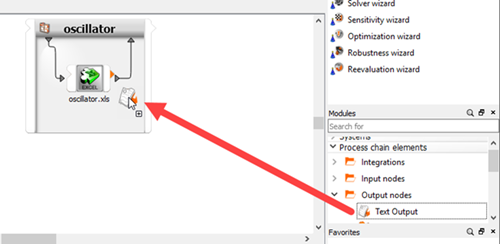
Clear the Receive design from parent system check box.
Double-click the Text Output node or right-click the node and select from the context menu.
To open the reference data file, click the orange folder.

In the Choose a file to open dialog box, browse to the oscillator_signals_excel folder and select oscillator_reference.txt.
Click .
Highlight the text in line 1 (Reference).
Right-click the selection and select > from the context menu.
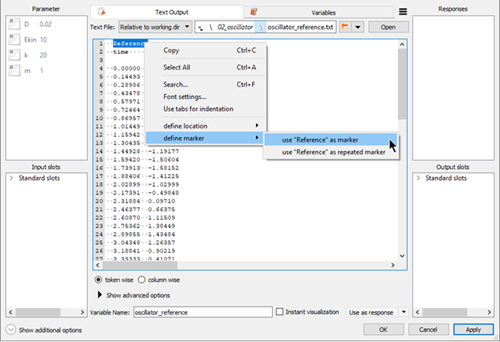
Highlight the first number in line 4 (0.00000)
Right-click the selection and select > from the context menu.
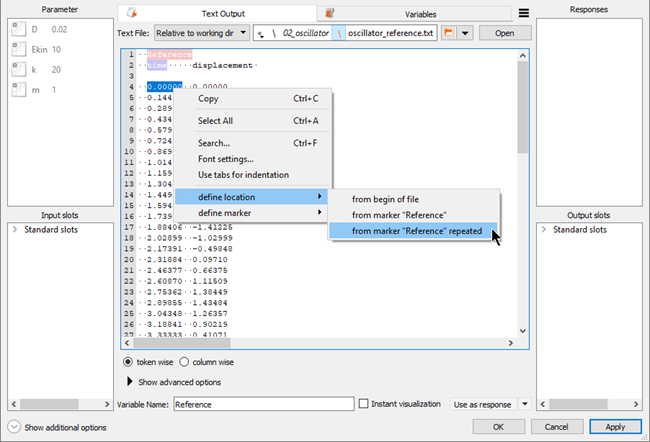
Select as the search mode.
Expand Show advanced options.

Set the number of tokens to
Max: 2.Click .
The signal is displayed in the Responses pane.

Click the arrow next to Use as response and select from the menu.
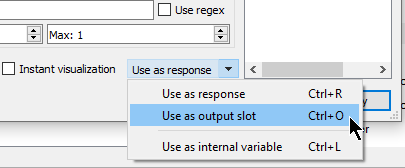
The signal is displayed in the Output slots pane.

Click .
Select > .
Click the Sending node field and select Text Output from the list.
Click the Receiving node field and select oscillator.xls from the list.

Click and drag Reference from the Sending node output slots list to New slot in the Receiving node input slots list and drop it on top.
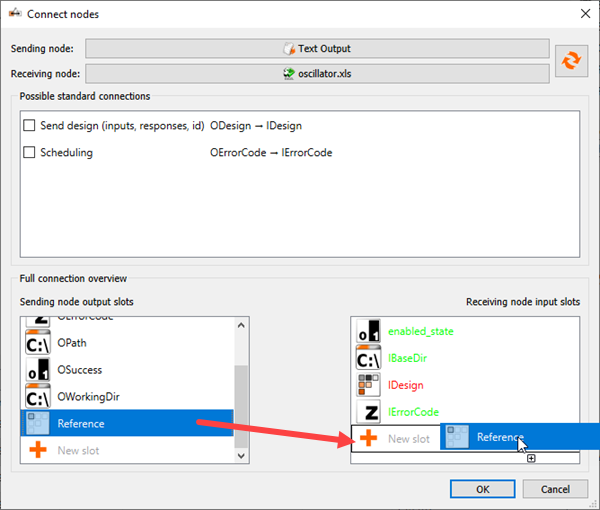
Click .
A connection between the Text Output and the oscillator node is created.
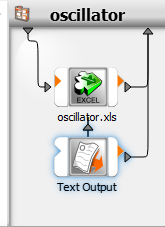
Double-click the oscillator node.
Switch to the Variables tab
Click .
Double-click the ID cell for the new variable, type
error_norm, and press Enter.Right-click the Expression cell of row 4 (error_norm) and select from the context menu.
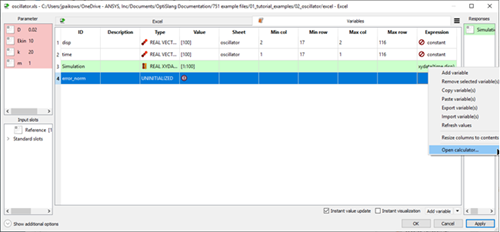
In the calculator, switch to the Linear Algebra tab.
Click .
In the brackets, type
Simulation-Reference.
In this step, you are extracting the norm of the signal differences as the input for the euklidnorm function.
Click .
Drag the error_norm row into the Responses pane to register it as a response.
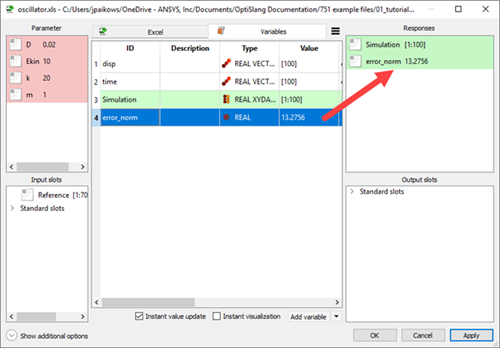
Click .



